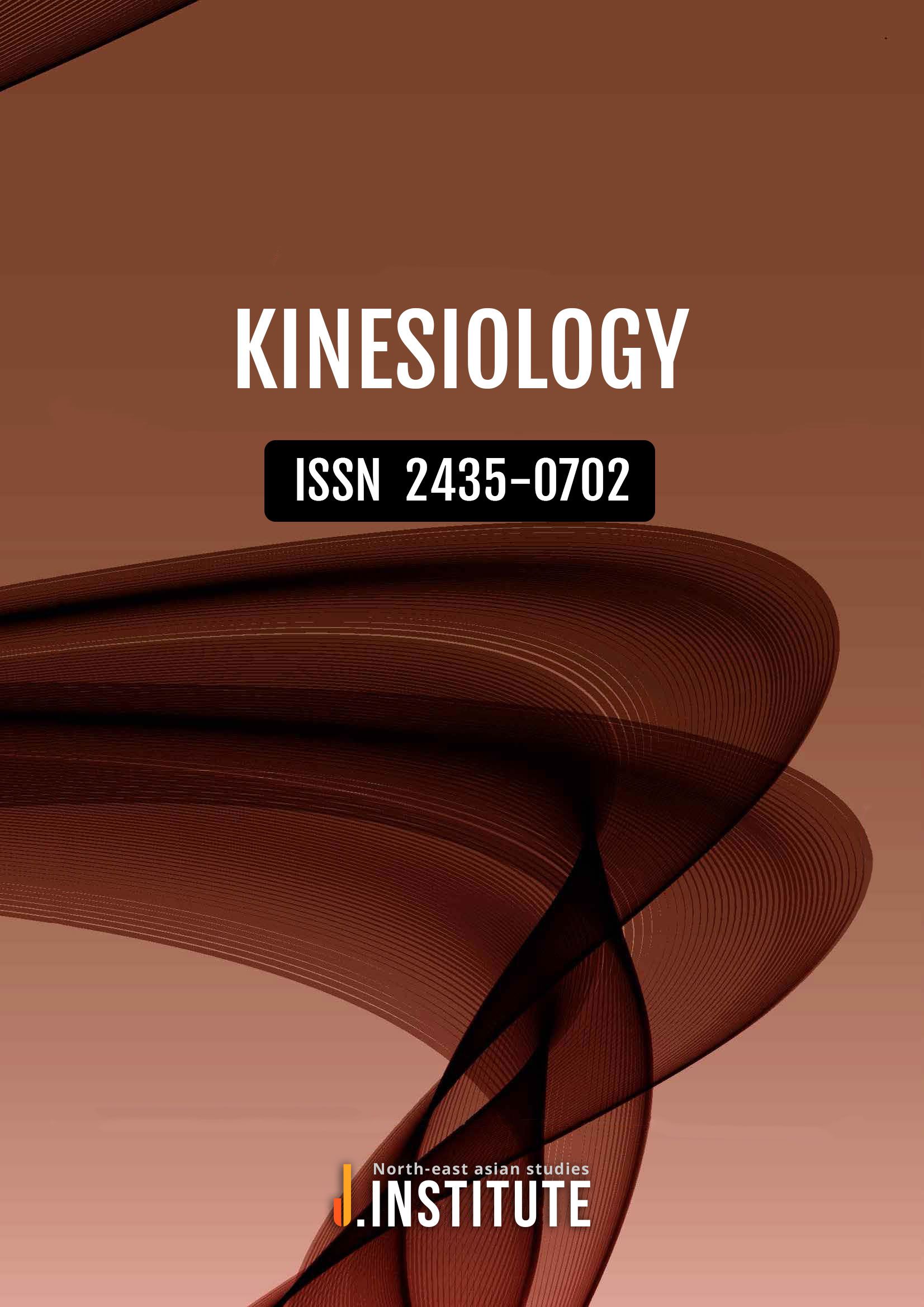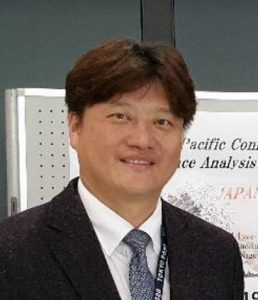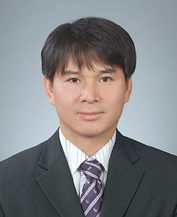Kinesiology is a historical interest in human life influence and has a basic life impact in various sports, exercise regimens, and body care regimens that play an important role in improving personal health and well-being.
Especially, recently due to the growing interest in health and the expansion of leisure time in East Asia, the desire to participate in physical activities is increasing, and the number of people watching sports as a healthy leisure activity is also increasing.
In addition, as national publicity and national unity effects of international sports events such as the Olympic Games are verified, a system for supplying players and supporting players in East Asia is required at a time when sports competition between countries is intensifying. Not only that, we are preparing strategies for policies that actively respond to the living environment, such as developing various policies to increase the participation rate of people in daily life sports and preparing systems to enhance physical abilities. Detail with the body from life, movement, culture, and trend.
As such, body management therapy has international influence in various areas such as health, contributes to improving human health and quality of life, and promotes international cooperation and understanding.
Therefore, this journal helps to understand the body’s motor control mechanisms and plays an important role in the evaluation of motor function understands the interaction between motor control and cognitive function and applies it to motor function evaluation, training, and rehabilitation to help improve individual motor skills and manage health. It is used in various fields such as fitness and medical fields.
Detail with a we recommend that potential authors review recent issues to determine whether their paper is appropriate to the journal.
Aims & Scope
Area 1 Sport
Area 2 Exercise Prescription
Area 3 Body Care Therapy
Latest Articles
+ View all articles
-
Purpose: Dance has increasingly been recognized not only as an artistic practice but also as a cultural sector with institutional, educational, and socio-economic significance. Since the early 2000s, sustained government intervention in South Korea has reshaped the conditions of dance creation, education, circulation, and international exchange within the broader K-Culture strategy. However, existing scholarship has largely focused on fragmented programs or short-term developments, offering limited insight into long-term governance transformation. This study aims to examine the evolution of Korean dance policy from 2000 to 2024 and to identify the governance mechanisms underpinning the sustainability of the dance ecosystem. Method: This study adopts a Narrative Literature Review (NLR) approach to analyze longitudinal policy change in the Korean dance sector. National cultural policy plans, annual reports, and implementation documents issued by the Ministry of Culture, Sports and Tourism and key intermediary organizations were systematically re-viewed. The analysis focuses on shifts in policy goals, policy instruments, and governance arrangements, through which a stage-based analytical framework was inductively constructed. Results: The findings reveal a three-stage evolution of Korean dance policy. The first stage (2000–2010) emphasized institutional construction through legal frameworks and foundational public funding. The second stage (2010–2019) focused on industry integration, characterized by project-based support, regional circulation mechanisms, and ecosystem-building initiatives. The third stage (2020–2024) involved digital expansion and internationalization, driven by digital transformation agendas and accelerated by the COVID-19 pandemic. Despite these developments, persistent challenges remain, including fragmented implementation, uneven regional capacity, and insufficient institutional arrangements for platform-based sustainability. Conclusion: Korean dance policy has evolved from finance-centered support toward a more platform-oriented and collaborative governance configuration. Nevertheless, the structural characteristics of dance as a performance-based art form continue to necessitate sustained public coordination and institutional support. The stage-based framework proposed in this study contributes to cultural governance research by illustrating how performing arts policy evolves through cumulative institutional reconfiguration. The findings further suggest that future dance policy should prioritize sustainability-oriented governance integrating education, digital infrastructure, and international cultural circulation.Keyword:Dance Policy, Cultural Governance, Performing Arts, Policy Evolution, K-Culture
-
Purpose: This study analyzed research trends to suggest directions for research on improving balance ability through proprioceptive training programs and to serve as data for future research. Method: To this end, we conducted a five-step scoping review using the methodology proposed by Arksey & O'Mally (2005) to search academic databases for academic papers published in Korea between 2002 and 2023. of the 716 articles, 20 met the selection criteria and eligibility review and were used in the final research analysis. Results: From the perspective of tailored interventions across the lifespan, studies on elderly women primarily focused on fall prevention and improving gait ability, while studies on athletes focused on joint stability and injury prevention during high-difficulty movements. This suggests the potential for proprioceptive training to expand beyond simple rehabilitation and become a lifespan-specific health promotion tool. Conclusion: An analysis of research trends in proprioceptive training programs in Korea revealed a diversity of training tools, with distinct improvements in balance ability across target groups. Furthermore, a trend toward more precise measurement tools was observed. In conclusion, proprioceptive training programs significantly improve static and dynamic balance in the general population, which is interpreted as a result of enhancing neuromuscular control and enhancing joint stability.Keyword:A Scoping Review, Proprioception, Balance, Improvement, Effect
-
Purpose: This study reexamines the importance and value of recreational judo, proposing policies and identities for Korean judo through the vision and prospects of recreational judo from 2010 to 2020. Furthermore, by specifically exploring the Gochang Goindol Cup Recreational Judo Competition and Gyeonggi Province's recreational judo, which is considered the nation's most outstanding, the study suggests future development directions and identities for recreational and elite judo in Korea. Method: This study specifically explored and analyzed the vision and prospects of Korean judo through a literature review of the history of recreational judo from 2010 to 2020, and presented the development direction, identity, social value, and importance of the Gyeonggi-do Judo and Gochang Dolmen Cup Judo competitions, which are the highest level in the country. Results: Recreational sport, allowing these enthusiasts to sweat and enjoy together. Government support and promotion of regional judo competitions and expansion of its base is a crucial step toward fulfilling its role in national sports welfare. Conclusion: To promote judo as a recreational sport, we should encourage frequent, voluntary club activities and ensure participation. In particular, free training sessions should be offered to increase interest in judo. Furthermore, judo instruction should be expanded beyond gyms to include it in physical education classes at schools. To further promote judo as a recreational sport, support from local community organizations is essential. Actively supporting the creation of multipurpose judo centers that can be used for various physical activities, including judo, and as a recreational sport will contribute to the promotion and revitalization of judo.Keyword:Korean Judo, Amateur Sports, Development Direction, Policy, Identity
-
Purpose: This study was conducted to objectively and in-depth identify key factors contributing to the successful retirement of smart and active seniors in Korea. This study was conducted to objectively and in-depth identify the core factors that constitute anger. Method: To this end, primary data was collected through an open-ended questionnaire targeting 120 smartphone-using adults aged 50 to 70 and older. The responses were content analyzed to develop preliminary questions. A second survey was conducted, in which 150 closed-ended questionnaires were distributed to verify the components. Results: The results of the study revealed that the 148 representative cases extracted from the primary data were categorized into 26 sub-factors, five main factors, and one miscellaneous factor. Exploratory factor analysis and reliability testing subsequently confirmed five key factors: participation in trend education, use of smart applications, use of smart devices, communication with others, and leisure activities. Conclusion: Active seniors in Korea are highly interested in smart healthcare based on information and communication technology (ICT), and they also tend to view leisure activities as an important factor. The significance of this study lies in its ability to objectively and in-depth identify the components of the successful aging process of smart active seniors in Korea.Keyword:Aging Society, Successful Aging, Intrinsic Competency, Smart Healthcare, Smart Active Senior
-
Purpose: This study utilizes the official report of the 2023 Qatar Asian Cup and aims to compare and analyze the physical movements of Asian soccer players during competition based on region, position, and whether or not they advanced to the round of 16. Method: The total distance traveled, activity level by speed section, high-speed running and sprint data were analyzed for 409 athletes who played for 90 minutes or more in the three group qualifying matches. Results: The difference in indicators depending on whether or not they advanced to the round of 16 was not statistically significant, but the teams that advanced recorded higher figures overall. By position, midfielders showed the most distance traveled and medium-intensity activities, while strikers showed prominent figures in high-intensity activities and sprints. This suggests specialization. Conclusion: In this study, we will provide basic information for the systematic analysis of Asian soccer in the future by identifying the characteristics of physical activity by position and suggesting the influence of factors other than physical fitness on competitive ability. We also propose the need for a multifaceted approach that includes technical and tactical elements, and hope to lay the foundation for the scientific development of Asian soccer.Keyword:Soccer, Asian Cup, Movement, Distance Traveled, Continental
Publishing Schedule
| JAN | FEB | MAR | APR | MAY | JUN | JUL | AUG | SEP | OCT | NOV | DEC | |
|---|---|---|---|---|---|---|---|---|---|---|---|---|
| Submission | 8/30 | |||||||||||
| Editorial Review | 9/10 | |||||||||||
| Double Blind Peer Review | 9/30 | |||||||||||
| Review-Form Reflection Review | 10/10 | |||||||||||
| Accepted | 10/20 | |||||||||||
| Manuscript Editing Review | 10/30 | |||||||||||
| Scientific Proofreading | 11/30 | |||||||||||
| Open & Hybrid Review | 12/10 | |||||||||||
| Published | 12/30 |
♦ Issues Per Year: Annual
Board Members
Head of Editorial Organization / President
Hongbum Shin
Keimyung University, KOR
[Curriculum Vitae]
General Vice President
Hyongjun Choi
Dankook University, KOR
[Curriculum Vitae]
Vice President
| Sangsoo Park Planning and Coordination | Daejeon University, KOR |
| Changyoung Kim Public Relations | Myongji University, KOR |
Editor in Chief
Wookwang Cheon
Keimyung University, KOR
[Curriculum Vitae]
Executive Editor
Hwansuk Choi
Jeonju University, KOR
[Curriculum Vitae]
Editor in Administrations
| Changbae Hong | Center for Sport Science, KOR |
| Changmo Cho | Keimyung University, KOR |
| Hojin Chung | Nanyang Technological University, Singapore |
| Hyeongil Yeo | Woosuk University, KOR |
| Jidong Tian | Keimyung University, KOR |
| Jie Ren | Jeonju University, KOR |
| Minji Lee | Daejeon University, KOR |
| Ruofei Du | Pukyong National University, KOR |
| Seongjin Hong | Honam University, KOR |
| Sunghee Koh | Myongji University, KOR |
| Sunghoon Kim | Yonsei University, KOR |
| Taehun Kim | Keimyung University, KOR |
| Tenglong Fan | Keimyung University, KOR |
| Wang Zi-Yan | Jeonju University, KOR |
| Weisheng Chiu | Hong Kong Metropolitan University, Hong Kong |
| Xuefeng Bai | Zhejiang University, China |
| Zhou Chao | China National Engineering Research Center for Information Technology in Agriculture, China |
| Xuemei Zhao | Shanghai University of Sport, China |
History
| 2015 | ||
| JUN. 23 | Establishment of the Publisher | |
| DEC. 05 | Inaugural General Meeting | |
| 2016 | FEB. 01 | International Journal of Sport (ISSN 2423-8287) |
| JUN. 30 | First Journal Publication | |
| OCT. 11 | Digital Object Identifier Enrollment (DOI) Google Scholar |
|
| 2019 | ||
| APR. 23 | EBSCO | |
| APR. 30 | I2OR | |
| MAY. 07 | ProQuest Exribris |
|
| MAY. 15 | Infobase Index | |
| MAY. 31 | SIS | |
| JUN. 30 | International Journal of Sport Title Alteration: Kinesiology (ISSN 2435-0702) | |
| 2020 | NOV. 02 | KCI (Korea Citation Index) |

Paper Submit
- inquiry@j-institute.org










